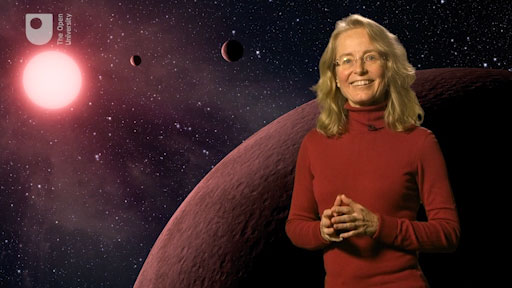Week 2: Planets, large and small
Introduction
Last week you learned about the Solar System and the planets within it. Those planets come in a range of sizes and they have very different conditions. Now that astronomers are discovering planets around other stars too, they are finding that planets are even more varied than the examples in our Solar System led us to believe. In Week 2, you’ll learn about the different classes of planet and their basic characteristics.
Watch the following video in which Carole Haswell talks about what you’ll be doing in the course this week.

Transcript
By the end of this week, you will be able to:
- describe what is meant by a terrestrial planet and a giant planet, and the differences between these two planet types
- understand the scale of the Solar System and use the astronomical unit to measure it
- classify the planets Jupiter, Saturn, Uranus and Neptune as gas giants or ice giants
- describe what is meant by mass, radius, volume and density, and how these terms are used within astronomy
- understand the meaning of the symbols AU, MJ, RJ, ME, RE, M⊕, R⊕, MSun, RSun, M⊙ and R⊙.
